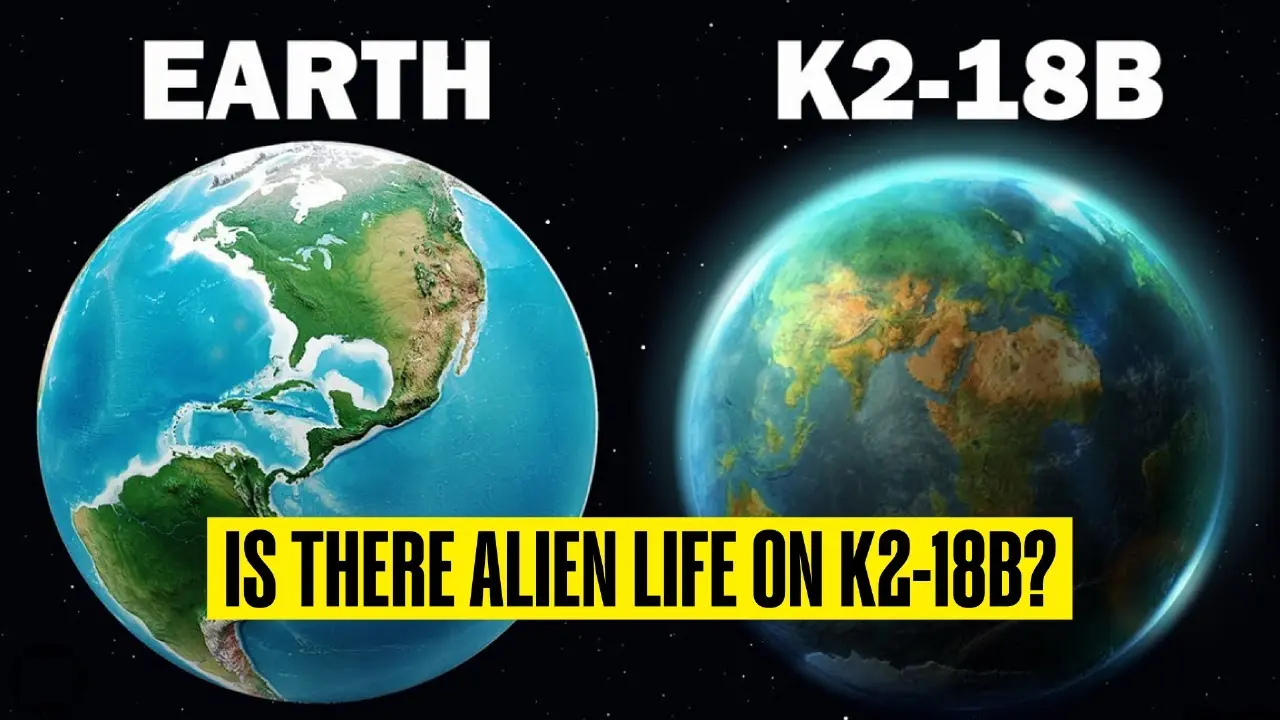Updated 17 April 2025 at 14:11 IST
Aliens Exist? Scientists Discover Evidence of Life on Planet 8X Larger Than Earth, 124 Light-Years Away
NASA's JWST reveals signs of methane and carbon dioxide in K2-18b's atmosphere, raising hopes of alien life on the distant planet.
- Science News
- 4 min read

In an exciting new discovery, scientists using the James Webb Space Telescope (JWST) have found strong evidence that there could be alien life beyond our solar system.
They detected two chemicals, dimethyl sulfide (DMS) and dimethyl disulfide (DMDS), in the atmosphere of a planet called K2-18b, which is 124 light-years away in the Leo constellation.
On Earth, these chemicals are usually linked to living things, especially tiny organisms in the ocean. This has led to hopes that K2-18b could have some form of life, possibly small microbes. Could this mean that aliens exist? The discovery brings us one step closer to answering that question.
The study suggests that K2-18b might have life. While scientists are cautious and say these are only possible signs, not proof, the discovery is an important step in the search for life beyond Earth.
Advertisement
A Glimpse into Alien Life?

K2-18b, an exoplanet approximately 8.6 times the mass of Earth, orbits within the "habitable zone" of its star, the region where conditions could support liquid water, an important ingredient for life.
Previous observations by JWST in 2023 revealed methane and carbon dioxide in the planet’s atmosphere, the first detection of carbon-based molecules in a habitable zone exoplanet’s atmosphere. However, the recent detection of DMS and DMDS is even more interesting.
Advertisement
These two gases are produced on Earth exclusively by living organisms, such as marine phytoplankton, and their presence on K2-18b could suggest similar biological processes occurring on this distant world. The gases were detected with an impressive 99.7 per cent confidence, a level high enough to suggest a biological origin, although scientists are still cautious.
"A Transformational Moment"
Nikku Madhusudhan, an astrophysicist at the University of Cambridge and lead author of the study, called this discovery a “transformational moment” in the search for life beyond our planet. He emphasized that this is the first time we have gathered such strong evidence pointing toward the possibility of life on an exoplanet. However, he urged caution, saying that more observations are needed to confirm the findings and eliminate other possible explanations.
“This is a huge step in the quest to answer the age-old question of whether we are alone in the universe,” Madhusudhan said. “For the first time, we have detected potential biosignatures on a world beyond our solar system, and it’s exciting to think that we might soon be able to definitively answer this question.”
K2-18b: A Hycean World

K2-18b is considered a prime candidate for what scientists call a “hycean world.” These planets are believed to have vast oceans covered by a hydrogen-rich atmosphere, potentially providing a suitable environment for microbial life, similar to early life on Earth. However, the planet is quite different from Earth in size and temperature. With a diameter about 2.6 times that of Earth, K2-18b has a much hotter and more extreme environment, which might make it less conducive to complex life. Still, scientists are especially interested in the chance that tiny microbes could be living in its oceans.

“If K2-18b does host life, it would likely be microbial, similar to the earliest forms of life on Earth,” Madhusudhan explained. He added that while more research is needed, the presence of DMS and DMDS in such high concentrations could indicate biological processes at work.
Scientists Seek More Observations to Confirm Life on K2-18b
Despite the excitement, scientists caution that the discovery is not conclusive proof of life. Other explanations for the presence of these chemicals in the atmosphere could include non-biological processes. However, the concentration of DMS and DMDS observed on K2-18b is thousands of times higher than what is found in Earth's atmosphere, making a biological origin the most likely explanation.
The next step for astronomers is to gather additional data using JWST and other instruments to confirm the findings. According to Madhusudhan, only a few more days of observation could help solidify the case for life on K2-18b.
Published By : Navya Dubey
Published On: 17 April 2025 at 09:29 IST
